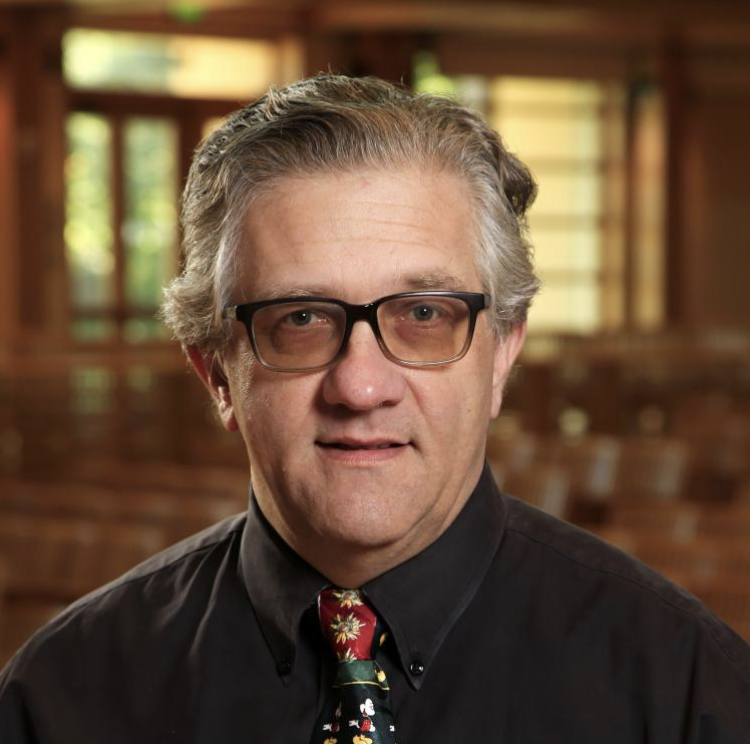|
Symphony
SRS SEASON ENDS WITH RESOUNDING TA-TA-TA-BANG
by Terry McNeill
Sunday, June 1, 2025
Symphony
YOUTHFUL VIRTUOSITY ON DISPLAY AT USO'S MAY CONCERTS
by Peter Lert
Saturday, May 17, 2025
Symphony
MYSTICAL PLANETS AND LIVELY GERSHWIN ORTIZ AT FINAL SRS CONCERT
by Peter Lert
Sunday, May 4, 2025
Symphony
VSO'S CONCERT MUSIC OF TIME, MUSIC OF PLACE
by Peter Lert
Sunday, April 27, 2025
Choral and Vocal
VOCAL ELEGANCE AND FIRE AT THE 222'S RECITAL APRIL 26
by Pamela Hicks Gailey
Saturday, April 26, 2025
CANTIAMO SONOMA SINGS AN INSPIRED GOOD FRIDAY MOZART REQUIEM CONCERT
by Pamela Hicks Gailey
Friday, April 18, 2025
DRAMATIC SHOSTAKOVICH SYMPHONY CLOSES PHILHARMONIC'S 25TH SEASON
by Terry McNeill
Sunday, April 13, 2025
LARGE COLLEGE OF MARIN AUDIENCE GREETS STOPHER ARTISTRY
by Terry McNeill
Saturday, April 5, 2025
Chamber
FRISSON DELIVERS SHIVERS OF DELIGHT
by Abby Wasserman
Sunday, March 30, 2025
OLD AND MOSTLY NEW IN SRS MARCH CONCERT IN WEILL
by Peter Lert
Saturday, March 22, 2025
|
 |
 Composer Brian S. Wilson |
FAMILIAR AND NEW - TRIO NAVARRO'S SPRING CONCERT IN WEILL
by Terry McNeill
Sunday, April 21, 2024
Familiar chamber music in concert always feels warm and cozy, and it was Dvorak’s often performed E Minor Trio (Op. 90 “Dumky”) that highlighted the Trio Navarro’s Schroeder Hall performance April 21.
Played many times over the Navarro’s long career, oddly the Dumky hasn’t been heard locally in some time, the last a splendid Manhattan Piano Trio’s reading in the Gualala Arts Center. Along with the “American” String Quartet it’s arguably Dvorak’s most often played chamber work, and consists of six disparate movements that at times share character and music color, beginning with anguished thematic outbursts by cellist Jill Brindel and pianist Marilyn Thompson in the opening Lento: Allegro.
Throughout the half hour performance of the work composed in 1891 large changes in dynamics and rhythms were heard, the themes beguiling and challenging with authentic Czech folk flavor. Especially effective was the playing in the Andante Moderato where violinist Tammie Dyer and Ms. Thompson’s piano line repeat ostinato figures over the cello’s sad melody. Tempos were always judicious and the composer’s often short accelerations of speed leading to new themes moved the ensemble forward fluently, sometimes sorrowfully, sometimes forcefully.
The last Dumka was played with a wide palate of melancholy and even sweetness and tied together the work, a gripping pathetic theme evolving into wild and expressive phrases and an abrupt ending.
There was very little melodic charm in the Navarro’s performance of Shostakovich’s Op. 67 Trio, also in E Minor, that opened the afternoon. Starting with the cello line’s high harmonic part the playing became at times calm melancholy and a faster folk character in a lively march. Ms. Dyer’s violin sound dominated much of the music, so reminiscent of the Op. 57 Piano Quintet and the sixth string quartet. Sonic effects in the hall’s three quarter of a second reverberation were everywhere – massive piano chords, wide vibrato in the cello, a violin-cello duo over a softly singing piano line, string pizzicato with clipped piano notes and a rough pungent march that Shostakovich fashions so effectively.
Music from the cello mirrored the whining banal theme in the composer’s first cello concerto, and Ms. Brindel played all with aplomb, set off by the violin line at the top of its range, piano notes swirling up and done the scale and bows bouncing lightly on strings. The effect in the half hour performance was rotating and relentless sound, unfolding tragedy, slight violin portamento that finally descended into eerie peace.
Closing the first half was an eerie piercing high clarinet note announcing the premiere of Brian Wilson’s Elements for Piano Trio and Clarinet. Long Sonoma State University’s preeminent faculty composer, Mr. Wilson’s 13-minute work displayed several rhapsodic fragmented themes where no single instrument dominated, though Ms. Dyer’s playing carried tellingly, taken up by the piano and the splendid clarinet interpretation of Roy Zajac.
Solos for each of the Navarro were ample, with Mr. Zajac taking the lead and then easily retreating into the mix after an extended trill. Here the playing of manifold instrumental dance-like lines required firm connective tissue, but there was enough exiting instrumental color to support the intriguing and engaging music. The addition of the clarinet to the usual trio blend made Elements at turns symphonic, an accomplishment for a numerically small number of just four players. Well, virtuoso players.
Among Mr. Zajac’s well-known credentials is his ability to play really soft in elongated phrases, calling attention to the beauty of his sound even when his colleagues are stentorian loud. This lovely tapestry, never dissonant and always flexible, made Elements in the hands of Mr. Wilson’s colleagues an upbeat and successful experience. So many like sounding works tend to be immediately attractive in the first bars but fade in interest as the music unfolds. Not so here, as Elements has enough musical cogency to give it likely repeated performances. The performance had conviction that captured the structural balance of the fetching score.
The composer was present and was called by the 70 in Schroeder to acknowledge the largest applause of the afternoon.
|

